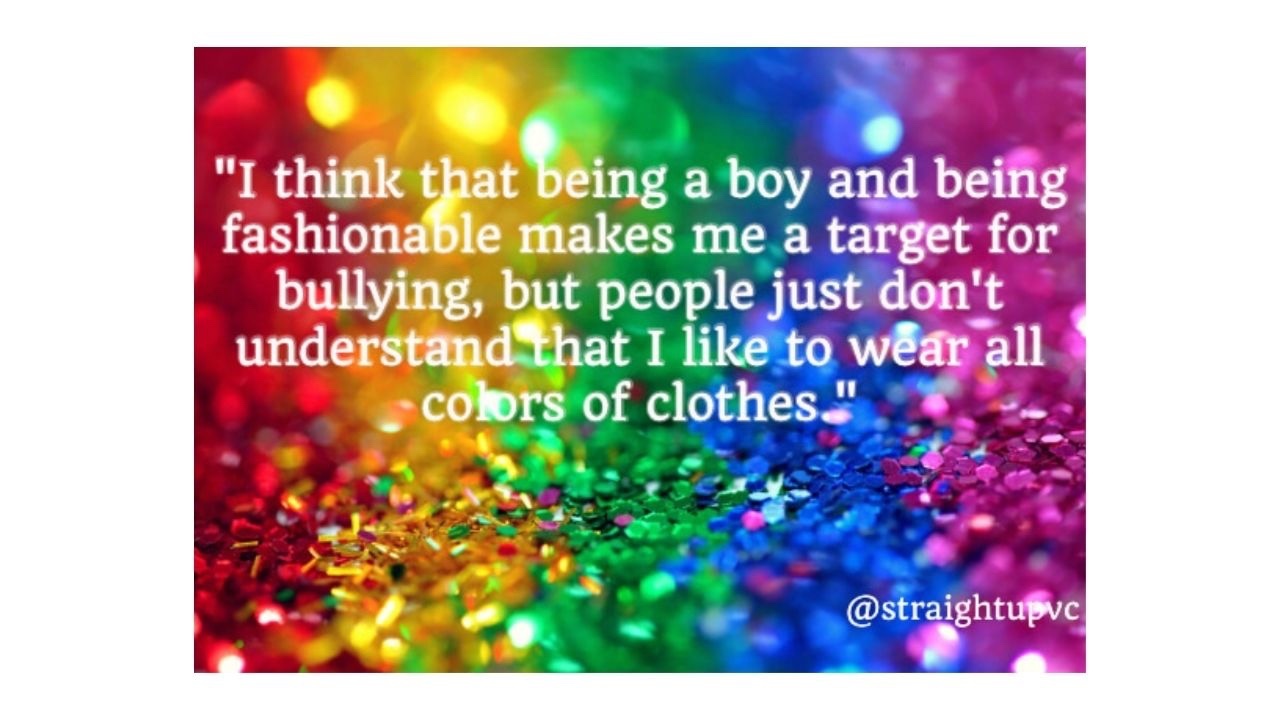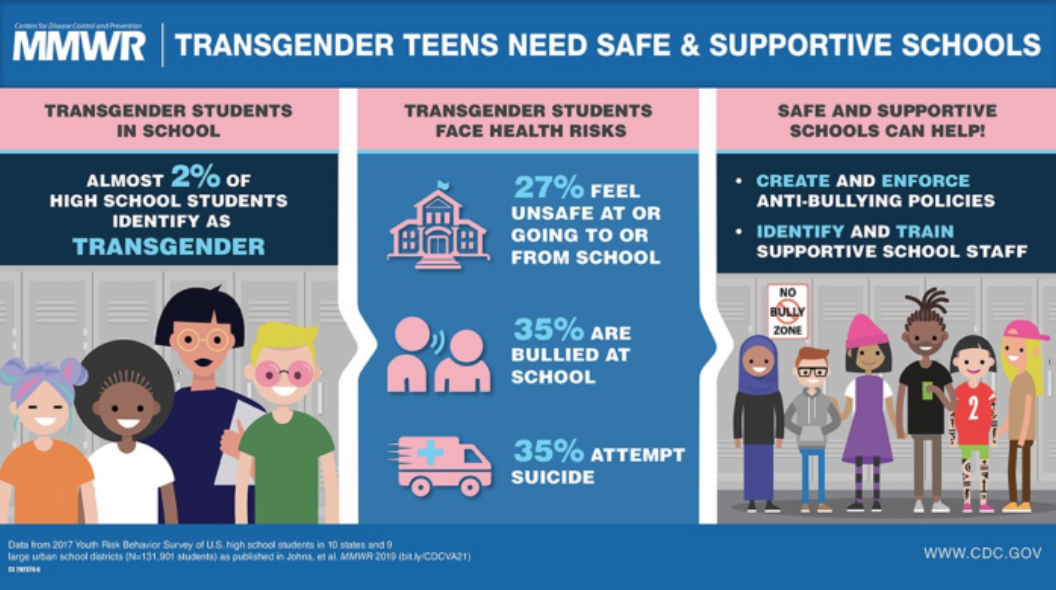
Bullying and LGBTQ+ Youth
Apr 27, 2022The above quote is from a member of Balboa Middle School’s Gay Straight Alliance, discussing bullying and being singled out for his appearance.
It’s possible that bullying has existed as long as humans have lived in groups. Perhaps it is our domineering, competitive nature that drives some to want power over and adoration from others. It seems like we are forever in one of three groups: the bullies, the bullied, or the bystanders. For those of us who did not grow up surrounded by the internet and social media, today’s culture of bullying appears to be more pervasive and inescapable than ever. At what point does bullying become a public health concern?
In order to address the problems surrounding bullying, we must first name and define bullying itself.
What is bullying?
Bullying is unwanted, aggressive behavior among children that involves a real or perceived power imbalance. The behavior is repeated, or has the potential to be repeated, over time. Both kids who are bullied and who bully others may have serious, lasting problems.
In order to be considered bullying, the behavior must be aggressive and include:
- An Imbalance of Power: Kids who bully use their power—such as physical strength, access to embarrassing information, or popularity—to control or harm others. Power imbalances can change over time and in different situations, even if they involve the same people.
- Repetition: Bullying behaviors happen more than once or have the potential to happen more than once.
Bullying includes actions such as making threats, spreading rumors, attacking someone physically or verbally, and excluding someone from a group on purpose.
Who gets bullied?
One reason that children are bullied is their perceived difference from others. Whether it’s their appearance, abilities, way of expressing themselves, or something else that makes them stand out, this can often make them an easy target for bullies.
Lesbian, gay, bisexual, transgender, or questioning (LGBTQ) youth and those perceived as LGBTQ are at an increased risk of being bullied. Results from the 2017 Youth Risk Behavior Survey show that, nationwide, more U.S. high school students who self-identify as lesbian, gay, or bisexual (LGB) report having been bullied on school property (33%) and cyberbullied (27.1%) in the past year, than their heterosexual peers (17.1% and 13.3%, respectively). The study also showed that more LGB students (10%) than heterosexual students (6.1%) reported not going to school because of safety concerns. Among students who identified as “not sure” of their sexual orientation, they also reported being bullied on school property (24.3%), being cyberbullied (22%), and not going to school because of safety concerns (10.7%).
What are the effects of bullying?
Bullying puts youth at increased risk for depression, suicidal ideation, misuse of drugs and alcohol, risky sexual behavior, and can affect academics as well. For LGBTQ youth, that risk is even higher.
The Trevor Project recently released the results from their 2019 National Survey on LGBTQ Youth Mental Health, the first “wide-ranging report from a cross-sectional national survey of LGBTQ youth across the United States. With over 34,000 respondents, it is the largest survey of LGBTQ youth mental health ever conducted and provides a critical understanding of the experiences impacting their lives.”
Among some of the key findings of the report:
- 39% of LGBTQ youth seriously considered attempting suicide in the past twelve months, with more than half of transgender and non-binary youth having seriously considered [suicide]
- Over 18% of LGBTQ respondents attempted suicide in the past twelve months
- 29% of transgender and non-binary youth respondents have attempted suicide
- 71% of LGBTQ youth reported feeling sad or hopeless for at least two weeks in the past year
- Less than half of LGBTQ respondents were out to an adult at school,
with youth less likely to disclose their gender identity than sexual orientation - 2 in 3 LGBTQ youth reported that someone tried to convince them to change their sexual orientation or gender identity, with youth who have undergone conversion therapy more than twice as likely to attempt suicide as those who did not
- 71% of LGBTQ youth in our study reported discrimination due to either their sexual orientation or gender identity
- 58% of transgender and non-binary youth reported being discouraged from using a bathroom that corresponds to their gender identity
- 76% of LGBTQ youth felt that the recent political climate impacted their mental health or sense of self
- 87% of LGBTQ youth said it was important to them to reach out to a crisis intervention organization that focuses on LGBTQ youth
So, how do we create a safe environment for LGBTQ+ youth?

A safe and supportive school climate can help prevent bullying. Safety starts in the classroom. Students should also feel and be safe everywhere on campus—in the cafeteria, in the library, in the bathroom, on the bus, and on the playground. Everyone at school — students and adults — should work together to create a climate where bullying is not acceptable. They should establish a culture of inclusion and respect that welcomes all students, and reward students when they show thoughtfulness and respect for peers, adults, and the school.
It is important to build a safe environment for all youth, whether or not they are LGBTQ. All youth can thrive when they feel supported. Parents, schools, and communities can all play a role in helping LGBTQ youth feel physically and emotionally safe:
- Build strong connections with LGBTQ youth to demonstrate acceptance and keep the lines of communication open. Often, LGBTQ youth feel rejected. It is important for them to know that their families, friends, schools, and communities support them.
- Accept LBGTQ youth as they are, regardless of how they identify, reveal, or conceal their sexual identity.
- Protect all youth’s privacy. Be careful not to disclose or discuss sexual identity issues with parents or anyone else, without the young person’s prior permission, unless there is an immediate threat to their safety or wellbeing.
- Provide interpersonal support to students by providing a safe place to talk about their sexual identity and navigate decisions about disclosing or concealing it with others.
- Establish a safe environment at school. Schools can send a message that no one should be treated differently because of who they are or are perceived to be. Add sexual orientation and gender identity protection to school anti-discrimination policies.
- Create Gay-Straight Alliances (GSAs). GSAs help create safer schools. Schools must allow these groups if they have other “non-curricular” clubs or groups. Learn more about the right to form a GSA under the Equal Access Act.
- Conduct social-emotional learning activities in school to foster peer-relationships and help students develop empathy.
What are some ways you would create a culture of inclusion to prevent bullying and promote acceptance of differences? Every child deserves to feel safe, at home and at school, and we should work to make sure every child feels supported and accepted.
For more information about LGBTQ resources, visit The Trevor Project.
Resources used for this article:

